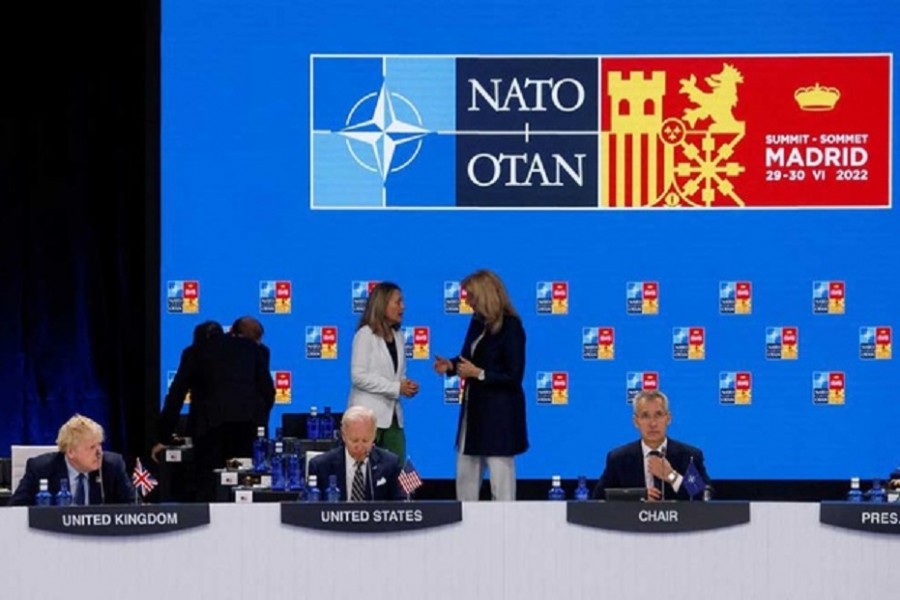NATO leaders have agreed to put over 300,000 troops on high alert from mid-2023, up from 40,000 currently, to counter Russia, the country designated by the alliance as posing the greatest threat over the next decade.
Here are details of the current force "posture" and the plans to update it to deter any future Russian attack on NATO's eastern flank, as well as to react to other crises on the alliance's southern borders, reports Reuters.
CURRENT FORCE POSTURE
- NATO has four multinational battalions in the three Baltic states and Poland, which from 2017 comprised some 1,000 troops each and were set up in response to Russia's 2014 annexation of Crimea from Ukraine.
- That force presence has grown since Russia invaded Ukraine on Feb 24. NATO also activated its 40,000-strong Response Force, while the United States sent some 20,000 more troops to Europe, taking the number of US military personnel on the continent to 100,000.
- Taking into account those multinational battalions and parts of the NATO Response Force, NATO's Supreme Allied Commander in Europe (SACEUR) has more than 42,000 troops under his command in Europe, with fighter jets on high alert and ships ready to respond.
- SACEUR is also the commander of US European Command, increasing the number of allied troops under his control.
- NATO also has national forces, but many are underfunded and lack the ability to deploy to conflicts quickly.
SHORT-TERM ENHANCEMENTS
- NATO is in the process of setting up four more multinational battalions in Hungary, Bulgaria, Slovenia and Romania, with around 1,000 troops each.
- It has also increased the number of aircraft in the southeast of alliance territory to patrol the skies and protect NATO airspace.
LONG-TERM POSTURE
- NATO will hugely increase the number of troops that are combat-ready and at higher readiness, meaning they are able to move quickly to defend allied borders in case of conflict in Europe.
- NATO will create a three-tiered system of readiness: 100,000 troops will be able to move to a conflict within 10 days; 200,000 troops can be deployed within 30 days; 500,000 troops can move within 180 days.
- The three tiers rely on the following concept: tactical forces in Europe first; operational reserves follow; finally, NATO draws on US and Canadian forces from across the Atlantic, known as strategic reserves.
- These forces already exist within NATO but need more investment, training and equipment to be deployed quickly. The higher readiness forces will also include - and supersede - the NATO Response Force.
- Crucially, for the first time since the Cold War, the forces will be assigned to specific regions, so that the SACEUR has an overview of available troops at any one time. Previously NATO troops had to be ready for any threat at any time, complicating preparedness.
- The designation of forces to specific regions is already underway. German forces will be assigned to Lithuania, for instance. A new headquarters in the Baltic nation will allow German soldiers that are stationed in Germany to spend limited periods during peacetime in Lithuania, which borders on the sensitive Russian Baltic exclave of Kaliningrad.
- British troops are being assigned to Estonia and Canadian troops to Latvia, both states that share borders with mainland Russia. Other allies have yet to come forward


